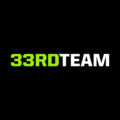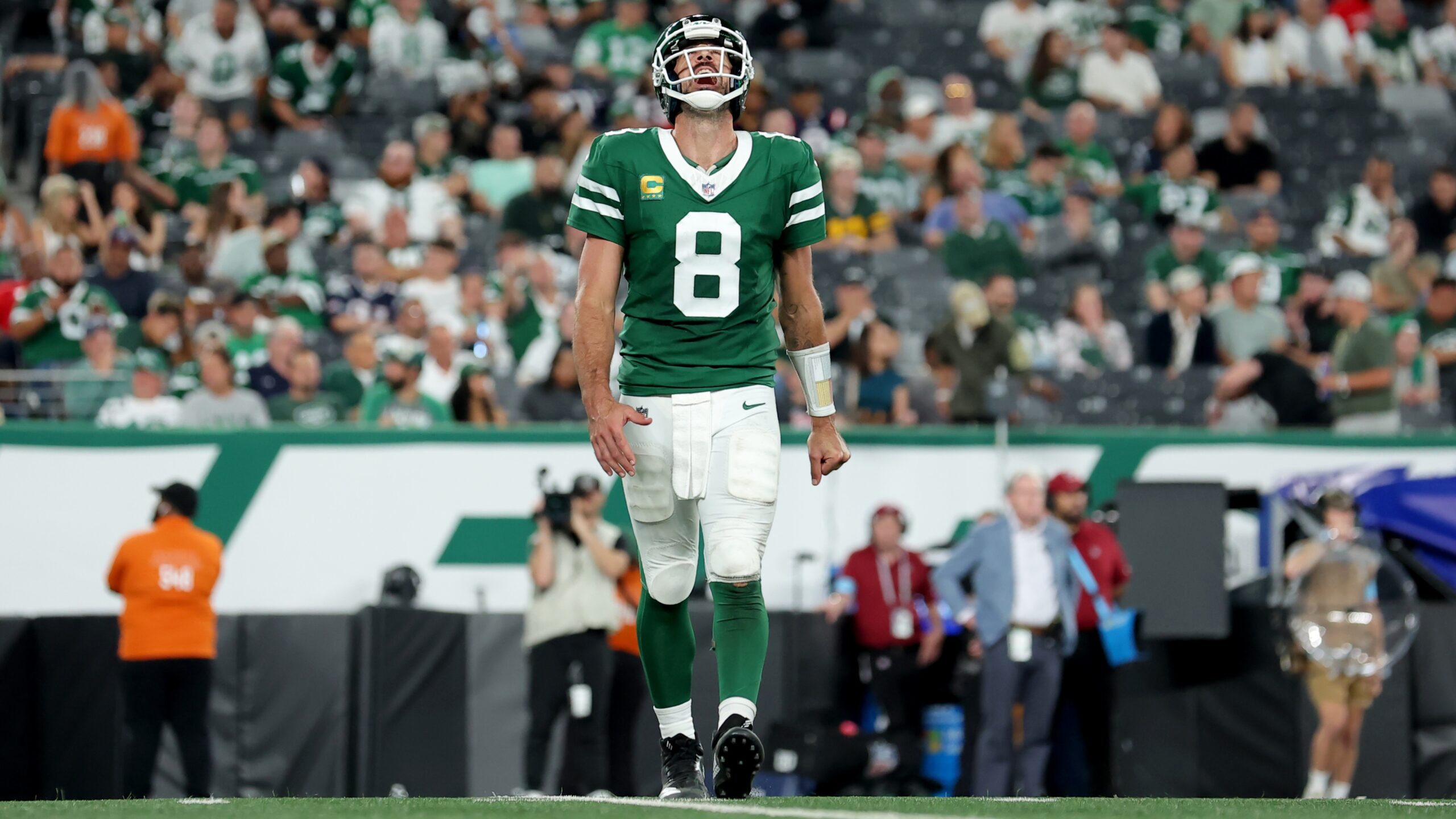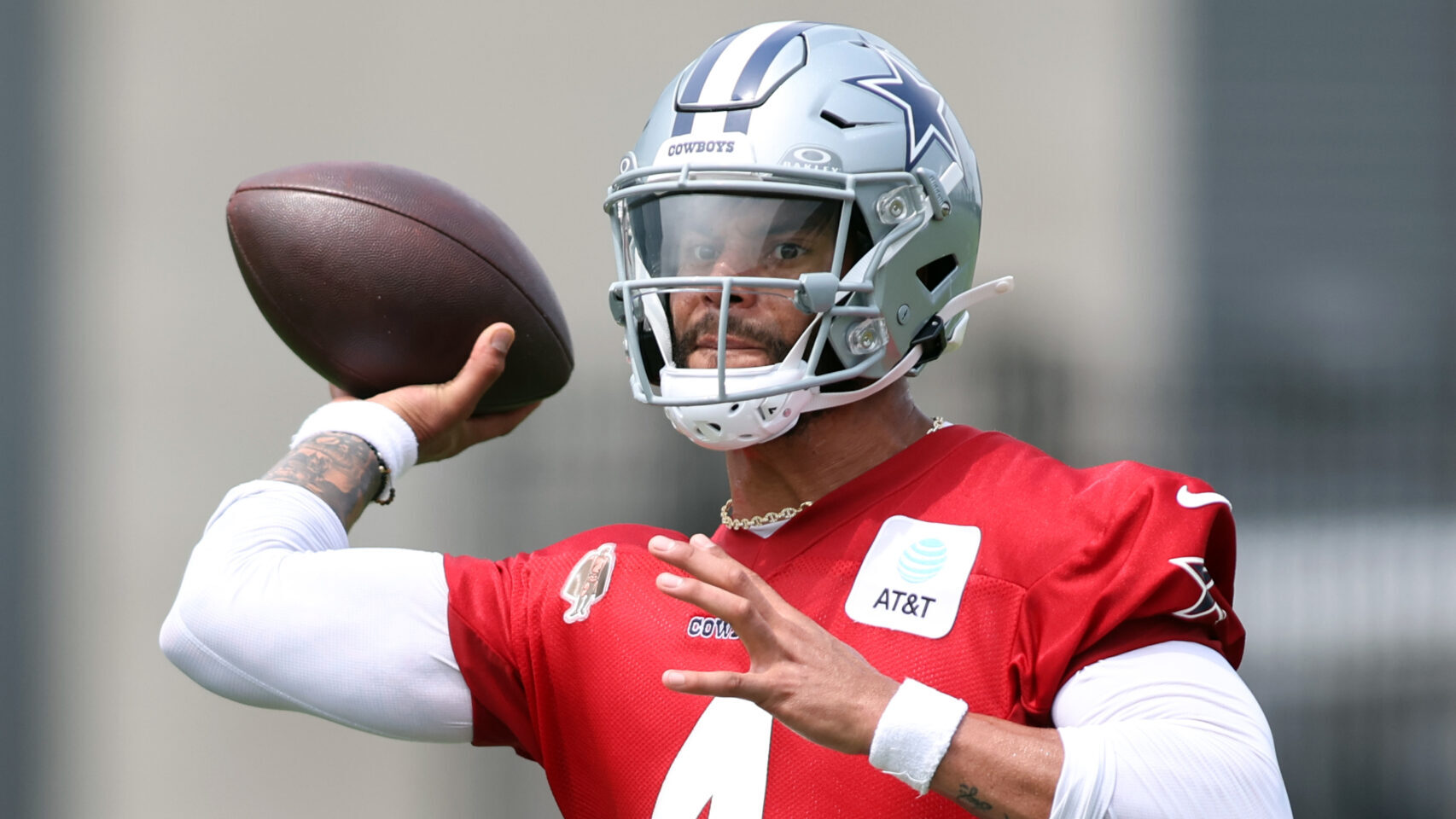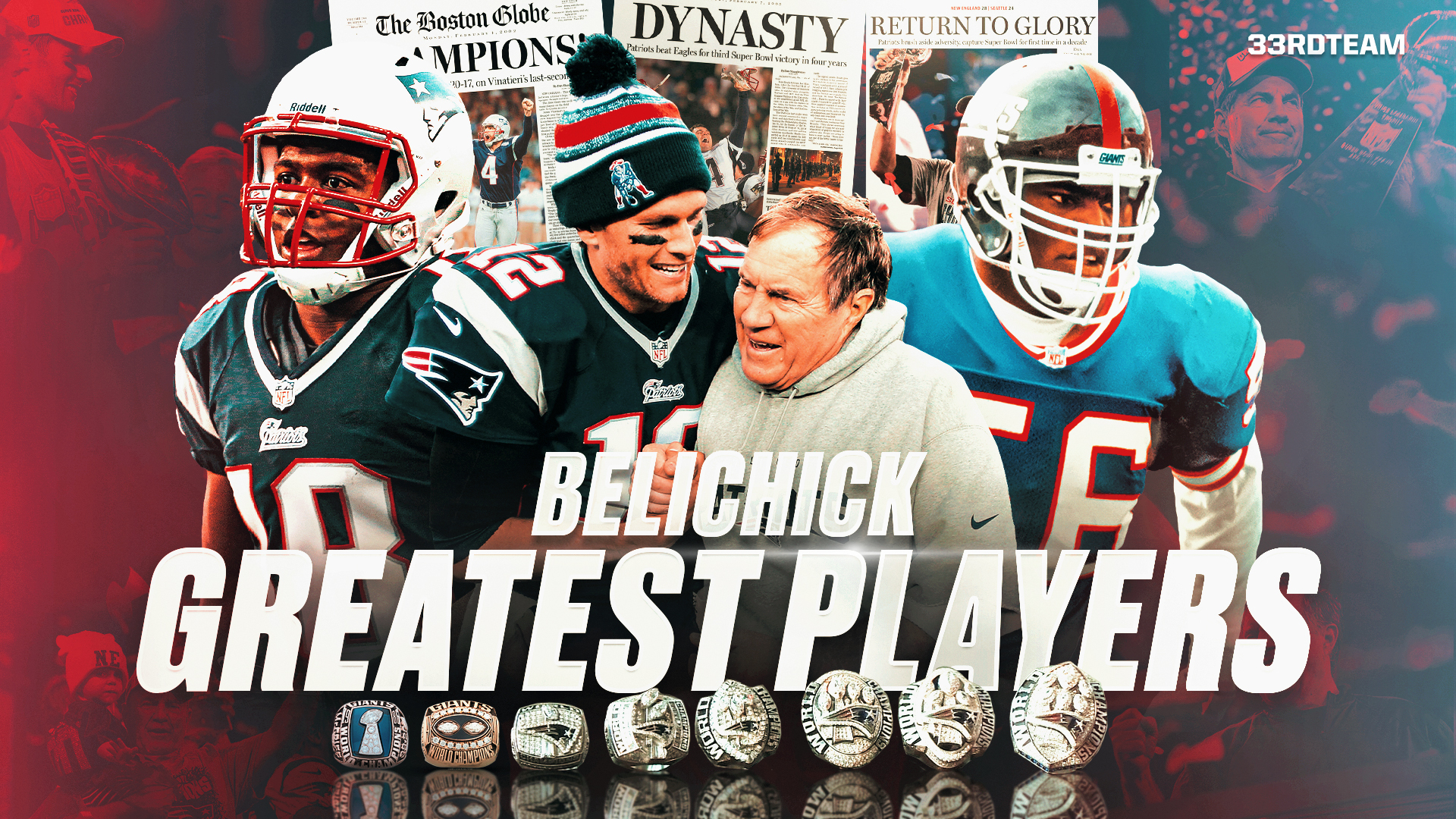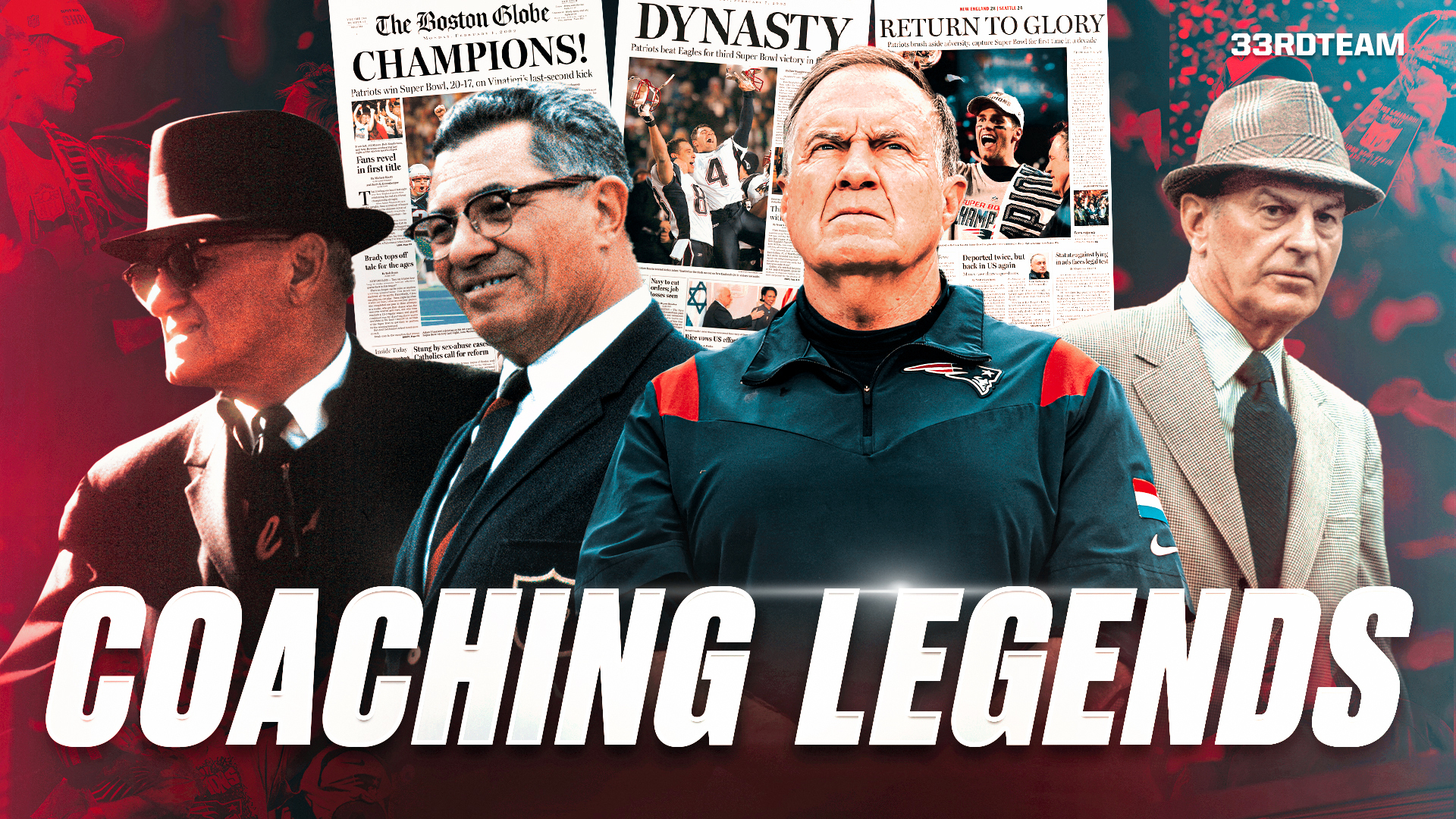Analysis
3/30/23
12 min read
Four NFL Teams That Have Plenty of Offseason Work Left to Do
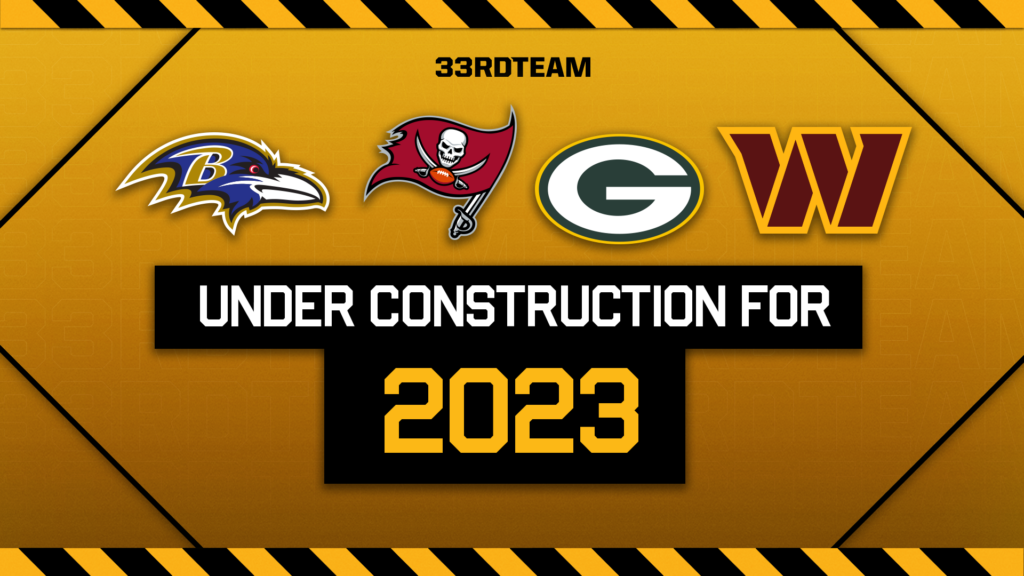
The costly phase one of free agency has passed, and we’re into less expensive signings in phase two. Some teams have been active and made major strides such as the Chicago Bears and some have been salary cap tight and mostly sitting on the sidelines, including the Green Bay Packers, who are mired in Aaron Rodgers’ trade talks, and the Baltimore Ravens as Lamar Jackson’s franchise tag strangles their cap.
As we hit April, draft preparation takes center stage because most teams will wait until after the draft to add bargain free agents at positions of need.
Here are four teams with a lot of work to do in the draft and remaining free agency to be playoff-worthy in 2023 and some suggestions going forward:
4 Teams in Need of Improvement
 Green Bay Packers (8-9)
Green Bay Packers (8-9)
Other than the hoopla surrounding the eventual trade of Rodgers to the New York Jets, it’s been too quiet on the free agency front. The Packers haven't made significant additions to a team that slumped from three consecutive 13-win seasons to falling out of the playoffs with a painful season-ending home loss to the Detroit Lions. The Packers lost leading receiver Allen Lazard to the Jets and top tight end Robert Tonyan to the Bears. They battled injury problems on the offensive line and need help there.
The defense underachieved, too. It struggled against the run (No. 26 in the league), and the pass rush ranked No. 22 in total pressures. The mid-season loss of their best pass rusher, Rashan Gary — who had six sacks in the first five games — due to an ACL injury was a major factor.
Now the Packers are chasing the Minnesota Vikings and Lions in the NFC North and the Bears are on the rise.
[bc_video video_id="6322979003112" account_id="6312875271001" player_id="default" embed="in-page" padding_top="56%" autoplay="" min_width="0px" playsinline="playsinline" picture_in_picture="" language_detection="" application_id="" max_width="680px" mute="muted" width="100%" height="100%" aspect_ratio="16:9" sizing="responsive" ]
Packers’ Next Steps
Get the Rodgers trade finalized for a second-round pick in 2023 and a second-rounder next year that can become a first if Rodgers takes the Jets to the playoffs this season while playing more than 75 percent of the Jets’ offensive snaps. As the Jordan Love era begins, help the young quarterback by bringing in a quality veteran receiver or two to replace Lazard and Randall Cobb. Those veterans will join forces with second-year men Christian Watson and Romeo Doubs.
>>DEBATE: What Will Trade Package for Rodgers Look Like?
DeAndre Hopkins would be a great addition, who would come at a high cost, but the Packers could restructure his contract and his $19.5 million base salary to reduce the cap hit. They could sign a veteran receiver such as Jarvis Landry on a bargain deal if they think he can stay healthy. Landry missed 13 games over the past two seasons. Odell Beckham Jr. would be a great addition but that may be cost-prohibitive, and it's unclear if Beckham Jr. would play in Green Bay without Rodgers.
The Packers have $22.8 million in cap room, but that will decrease by $9 million if Rodgers is traded before June 1, which is likely because they want a 2023 draft pick. They have enough money to sign a veteran receiver and can add more room with a few restructures. The Packers should also add free agents and draftees on the front seven to aid their run defense and pass rush. They lost defensive lineman Dean Lowry to the Vikings in free agency.
Green Bay should help the defense by adding second and/or third-round picks in this draft. They have 10 picks but four of them are in Round 7, however, they likely will gain another second-round pick in the Rodgers trade. They also must get last year’s first-round defensive end Devonte Wyatt, who had only 15 tackles and 1.5 sacks, to elevate his game.
At No. 15 overall, Green Bay should pick an offensive tackle to start on the right side and eventually take over for often-injured left tackle David Bakhtiari, allowing them to keep Elgton Jenkins at guard. They could add another weapon for Love by selecting a tight end in the first round from a strong draft group to replace Tonyan.
Then, coach Matt LaFleur needs to coach up Love and quit talking about lowering expectations for a quarterback going into his fourth season.
[bc_video video_id="6322042433112" account_id="6312875271001" player_id="default" embed="in-page" padding_top="56%" autoplay="" min_width="0px" playsinline="playsinline" picture_in_picture="" language_detection="" application_id="" max_width="680px" mute="muted" width="100%" height="100%" aspect_ratio="16:9" sizing="responsive" ]
 Tampa Bay Buccaneers (8-9)
Tampa Bay Buccaneers (8-9)
The Tampa Bay Buccaneers won the lousy NFC South and then were convincingly eliminated by the Dallas Cowboys in the wild-card round. In Tom Brady’s final season (or so he says), Tampa Bay ranked second in passing, thanks to Brady’s quick release, but last in rushing.
The offensive line was a weak link. This was due to the departure of both starting guards, Pro Bowl center Ryan Jensen’s knee injury that knocked him out for the regular season (he returned for the playoff game), and All-Pro tackle Tristan Wirfs missed four games with a bad ankle.
A top-10 defense helped but didn’t produce enough takeaways; Tampa Bay ranked 24th. The Buccaneers were limited in free agency because of a bad cap situation, and they have only $3.5 million of room. They cut tackle Donovan Smith, running back Leonard Fournette and tight end Cameron Brate to free space and barely had enough funds to re-sign two of their best defensive players — linebacker Lavonte David and cornerback Jamel Dean. They also lost starting safety Mike Edwards to the Kansas City Chiefs in free agency.
The Buccaneers couldn’t go after the top free agent quarterbacks Derek Carr and Jimmy Garoppolo, nor enter the Rodgers bidding. So Baker Mayfield was signed to a one-year, $4 million prove-it deal with $4.5 more available in incentives. He’ll compete with 2021 second-round pick Kyle Trask to be the Buccaneers’ starting quarterback unless the team pulls a mild surprise and drafts a quarterback at No. 19 overall.
[bc_video video_id="6323038575112" account_id="6312875271001" player_id="default" embed="in-page" padding_top="56%" autoplay="" min_width="0px" playsinline="playsinline" picture_in_picture="" language_detection="" application_id="" max_width="680px" mute="muted" width="100%" height="100%" aspect_ratio="16:9" sizing="responsive" ]
Buccaneers’ Next Steps
The Buccaneers have an aging roster that needs a solid draft, and they have nine picks to add talent. They should draft more offensive line help, starting with a right tackle to replace Smith and another guard. Tampa Bay needs to add depth and youth at running back, tight end and throughout the defense, including a replacement for Edwards. Drafting a developmental quarterback in the middle rounds is a good idea to add competition in the future.
Things should look better for Tampa Bay cap-wise in 2024 when they no longer have Brady’s dead money hitting their salary cap ($35 million this year). The Buccaneers need to step up their talent base because their NFC South peers — the New Orleans Saints, Carolina Panthers and Atlanta Falcons — appear to be doing just that.
 Baltimore Ravens (10-7)
Baltimore Ravens (10-7)
With Jackson out due to his knee injury, the Ravens lost four of their last five games, including a first-round playoff loss to the Cincinnati Bengals. Speaking of a quarterback strangling the team’s cap, the Ravens were forced to put the $32.4 million non-exclusive franchise tag on Jackson, due to their ongoing contract dispute.
This left them little cap room to sign free agents and in a tight spot to try and return to the playoffs while playing in the tough AFC North. The only noteworthy addition thus far is wide receiver Nelson Agholor from the New England Patriots on a one-year, $3.25 million deal.
Agholor adds a decent veteran to a group in need of help, especially after former first-rounder Rashod Bateman played only six games before a foot injury cost him the rest of the season. The Ravens traded Marquise Brown to the Arizona Cardinals in 2022 and got a first-round pick, which they used to draft terrific, all-rookie team center Tyler Linderbaum, but the wide receiver corps suffered. Demarcus Robinson led the group with 48 catches for 458 yards, and he’s currently a free agent.
Baltimore's top-10 defense was excellent against the run (No. 3) and made a great addition via in-season trade in Pro Bowl LB Roquan Smith, but was shaky in pass defense (No. 26). The Ravens lost stalwart Calais Campbell in free agency to Atlanta, creating a hole upfront. The team has only $7 million of cap room and has just five picks in the draft starting with No. 22 overall. The Smith trade cost them their second-rounder and a fifth.
[bc_video video_id="6323559135112" account_id="6312875271001" player_id="default" embed="in-page" padding_top="56%" autoplay="" min_width="0px" playsinline="playsinline" picture_in_picture="" language_detection="" application_id="" max_width="680px" mute="muted" width="100%" height="100%" aspect_ratio="16:9" sizing="responsive" ]
Ravens’ Next Steps
Baltimore averaged 25 points per game with Jackson in the lineup and 13 points per game when he was out and replaced by Tyler Huntley. It’s obvious the Ravens need to get the 26-year-old former MVP signed long-term. That’s a much better solution than the bitter feelings that will grow more intense if he’s forced to play under the franchise tender. They also need to keep him healthy, which could mean less running for a dynamic rushing QB.
>>DEBATE: How Will Stalemate with Jackson Get Resolved?
The Ravens finished second in rushing last season, thanks in large part to Jackson’s 764 yards on the ground in 11 games. They also need a healthy J.K. Dobbins (520 rushing yards), who possesses a productive 5.9-yard career rushing average, but he missed 10 games this past season because of knee issues after an ACL knocked him out of the entire 2021 season.
If and when Jackson is in the lineup, he needs a healthy Bateman and an influx of talent beyond Agholor to play alongside Pro Bowl tight end Mark Andrews. Trading for Hopkins makes sense if the Ravens get Jackson’s long-term deal done and free up significant cap room. Landry or Beckham are also nice fits if healthy, and in Beckham’s case, affordable.
The Ravens should draft another wide receiver in the first or third rounds and a cornerback in one of those rounds if they can’t re-sign free agent Marcus Peters, who made $14 million per year on his last deal. Their tight cap may prohibit that unless the Ravens do what other general managers are doing with voidable deals to reduce current cap hits. But those maneuvers eventually come home to roost, as is the case for the Buccaneers this year, thanks to Brady's deal.
 Washington Commanders (8-8-1)
Washington Commanders (8-8-1)
Things remain messy in Washington with Daniel Snyder’s ownership in limbo and coach Ron Rivera on the hot seat after two straight non-playoff seasons with a 1-3-1 finish dooming the Commanders last season.
The quarterback situation is not inspiring confidence among the fan base. The Washington Commanders wasted two third-round picks for the now-released Carson Wentz, let average-at-best Taylor Heinicke leave for Atlanta in free agency and then gave a one-year, $8 million contract to Jacoby Brissett, who went 4-7 as the Cleveland Browns’ starter last season before Deshaun Watson took over.
Brissett is expected to compete with last year’s fifth-rounder Sam Howell, who started and played in only one game. He passed for 169 yards, one touchdown and one interception, and ran for 35 yards and a score in a season-finale victory against the Cowboys.
The good news is the Commanders had the league’s third-ranked defense with a dominant front four. They made several big moves in free agency, including re-signing Daron Payne, who had 11.5 sacks and 64 tackles last season, for four years and $90 million. That kept the best pair of defensive tackles in the league together, as Jonathan Allen also was a Pro Bowl pick.
They fortified the offensive line, which was leaky in pass protection (48 sacks allowed, seventh-worst) by signing Chiefs right tackle Andrew Wylie for three years and $24 million and Giants center Nick Gates, who also can play guard, for three years and $16.5 million.
They have $3 million in salary cap room remaining, so more space must be created to sign the team’s eight draft picks and have the funds to cover remaining players when everyone on the roster counts in September. That includes players on injured reserve and the practice squad as opposed to just the top 51 players now.
[bc_video video_id="6320397819112" account_id="6312875271001" player_id="default" embed="in-page" padding_top="56%" autoplay="" min_width="0px" playsinline="playsinline" picture_in_picture="" language_detection="" application_id="" max_width="680px" mute="muted" width="100%" height="100%" aspect_ratio="16:9" sizing="responsive" ]
Commanders’ Next Steps
The Commanders need to add more help to the offensive line and should draft a tackle or guard in the first or second round to strengthen it and possibly push 31-year-old left tackle Charles Leno, who gave up eight sacks last season after playing better in 2021. Leno’s cap numbers of $12.5 million this year and $14.5 million next year make him a potential cap casualty if the Commanders can find a quality replacement.
Gates’ addition could mean center Chase Roullier, who has missed 24 of 34 games the past two seasons because of injuries, could be released to save $4.3 million in cap room. Perhaps, the team can sign a few bargain free agents post-draft.
Washington also may draft a tight end to replace 31-year-old Logan Thomas, who had just 39 catches for 323 yards and one TD last season. It also needs playmakers in the secondary because, despite the defense’s high ranking in yards allowed, it only ranked No. 26 in takeaways.
It’s certainly possible — and advised if a top prospect is there — for the Commanders to draft a quarterback at No. 16, which would excite a fan base disgruntled with the ownership issues and the lack of on-field success. Playing in the tough NFC East, it’s difficult to see Howell or Brissett lifting the Commanders over the Eagles, Cowboys and Giants.
Jeff Diamond is a former Minnesota Vikings general manager and Titans team president. He was selected NFL Executive of the Year after the Vikings’ 15-1 season in 1998. Follow him on Twitter at @jeffdiamondnfl.

